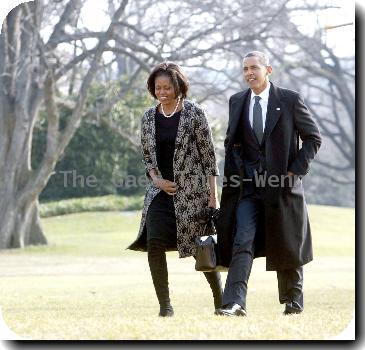TSA announces 9 more airports to get body scanners to detect hidden explosives, contraband
By Glen Johnson, APFriday, March 5, 2010
Airport body scanners spreading across US
BOSTON — The Transportation Security Administration on Friday announced nine more U.S. airports that will receive body-scanning technology, as the U.S. heightens its effort to detect hidden explosives and other weapons amid a threat highlighted by an attempted bombing on Christmas Day.
TSA security director Lee Kair said units will be fielded in the coming months at Fort Lauderdale, Fla.; San Jose, Calif.; Columbus, Ohio; San Diego; Charlotte, N.C.; Cincinnati; Los Angeles; Oakland, Calif.; and Kansas City.
They will join three machines going online Monday at Boston’s Logan International Airport, and one being deployed next week at O’Hare International Airport in Chicago.
All are among 150 machines bought with money from the federal stimulus package signed by President Barack Obama last year. They join 40 machines already in use at 19 airports nationwide.
Both the new and existing machines will also now be in a primary position, meaning they will be the default screening equipment passengers face at a checkpoint. The existing machines have been in a secondary position, being used only when a passenger failed a metal screening or posed some other risk factor.
Passengers retain the right to opt out of a body scanning for a more intense but traditional screening. The Associated Press timed a body scanning at 25 seconds, and Kair said he did not expect them to take any longer than a passenger would have to otherwise wait for the X-ray of carry-on bags.
Deployment of the machines was announced in the fall, before Nigerian Umar Farouk Abdulmutallab allegedly tried to blow up a Detroit-bound airliner on Christmas Day with explosives concealed in his underwear. Even so, that event highlighted the need for additional security in the U.S. aviation system.
Other countries have also signed on to use the technology, including Nigeria and the Netherlands, where Abdulmutallab started his flight and then connected to the U.S.
Civil libertarians have complained that the new machines can violate a passenger’s privacy. The American Civil Liberties Union has denounced the screening as a “virtual strip search.”
One Logan passenger didn’t share the concerns.
“There’s always going to be issues. As long as they maintain proper control over the situation, I have no problem with it,” said Michelle Carrier, 32, who was flying to Houston. “Freedom’s important, but this is one of the prices you pay for safety.”
The image from a machine displayed for reporters on Friday showed the blurry outline of a female volunteer. None of her clothing was visible, nor were her genitals, but the broad contours of her chest and buttocks were. Her face also was blurred.
The image included the shadow of a cell phone purposely left on her belt, as well as the metal buttons on her pants. But overall, it looked like the outline of a ghost. Samples are on display on the TSA’s Web site.
TSA officials said that the units won’t be able to print or store images, and that the officer viewing them will have no contact with passengers. The passenger will remain at the checkpoint until the officer in the viewing room radios an all-clear to another officer standing with the passenger.
Passengers who accept a scan — and pass — will not have to walk through a metal detector or other security equipment. Those who decline will have to walk through a metal detector and also submit to a patdown. While the devices are not aimed at detecting contraband such as illegal drugs, if they are detected, a law enforcement officer will likely be notified, said a TSA spokeswoman.
Kair said he was confident terrorists couldn’t concentrate on beating the patdown because of other layers in the security system, including expanded use of explosive trace detection equipment and behavioral analysis.
“When you go through all the layers of security, they have a multiplying effect,” he said.
The Obama administration announced in February 2009 that it would provide $1 billion for airport screening as part of its $787 billion federal stimulus package.
In May, the administration detailed how that money would be spent — including $25 million for the new scanners. Between May and September, the department asked contractors to provide proposals for building the scanners. Competing models were tested over the summer.
The department awarded the contract to California-based Rapiscan at the end of September.
On the Net:
Transportation Security Administration: www.tsa.gov
Tags: Airline-security, Airport Security, Barack Obama, Boston, California, Massachusetts, North America, Transportation, United States

